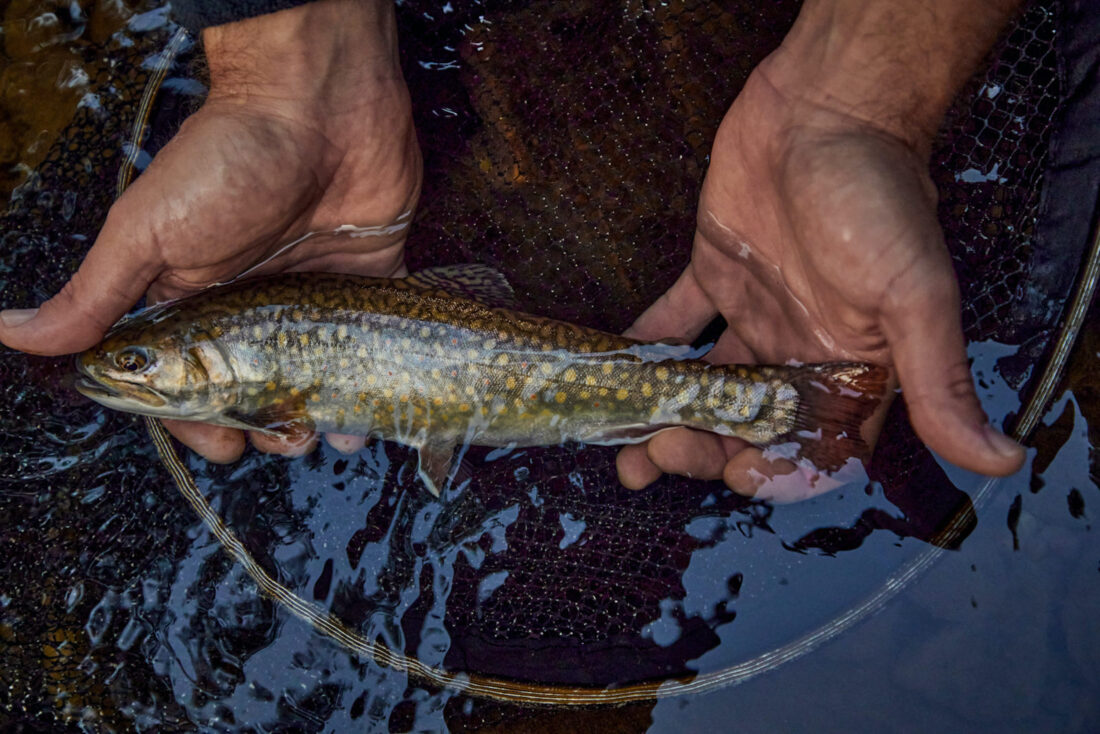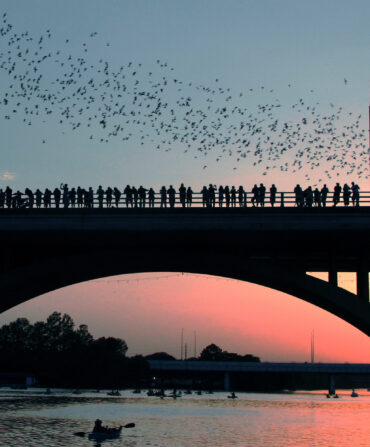In the wake of the flooding from Hurricane Helene in Western North Carolina, residents are still missing, houses and buildings lie in ruins, and thousands of people are without potable water. And scientists are beginning to reckon with the impacts to the region’s astounding aquatic biodiversity. “For folks in other professions, going back to work can function as an escape,” says Luke Etchison, the aquatic wildlife diversity coordinator with the North Carolina Resources Commission. “For us, when we’re on the clock, we’re focusing on the disaster even more.”

Conditions are still mostly too dangerous for biologists to be out in the field sampling; bridges are missing, riverbanks are unstable, and debris is still widespread. But they are making their best guesses at what awaits. “Trout tend to find a way if it’s just water,” says Jacob Rash, the coldwater research coordinator for the North Carolina Wildlife Resources Commission. “They seek shelter behind some kind of structure along the banks and try to ride it out.” Some, inevitably, are washed downstream, and it isn’t surprising if the trout population of a badly flooded stream takes a hit. But as long as some fish hang on and the habitat remains intact, they can regain their pre-storm numbers over time.
Rash and his team have spent years carefully monitoring the region’s population of brook trout, the only trout species native to the Southeast. Even before Helene, brook trout numbers were down 80 percent across their range due to years of habitat degradation coupled with competition from introduced brown and rainbow trout. Though researchers won’t understand the storm’s impact on the species until it’s safe to begin sampling, Rash is relieved that it struck very early in the spawning season; any later and it could have wiped out the year’s crop of eggs. “There’s such a deep-rooted connection to this fish in our hollers and valleys and mountains,” he says. “Some of these places may have changed, and some might not be accessible for a while, but on the whole I think there will still be plenty of brook trout for people to go looking for in Western North Carolina.”
Downstream from the headwaters that house brook trout, though, aquatic species like small fish, mussels, and salamanders bore the brunt of raging waters carrying washed-out trees and debris. “We will probably see that there’s a big hit on basically everything,” says Etchison, a specialist in nongame fish. “The things that had more places to hide and live in a lot of tributaries of their watersheds will bounce back quicker. Our biggest concerns are the things that are isolated to just a few places.”
Take the blotchside logperch: This three-inch, ray-finned fish resides only in the South Toe River. “And the South Toe got smoked,” Etchison says. Mussels in general will have fared poorly, as they can’t swim or hide as fish can in a flood. He’s particularly worried about the endangered Appalachian elktoe mussel, which lives in the watershed of the French Broad River. The hellbender salamander is another pressing concern; Western North Carolina was the last stronghold for the species. “They are screwed; I don’t need a survey to tell me that,” says JJ Apodaca, an Asheville-based herpetologist who has worked with the species for years.
However, signs of life are stirring in the French Broad. People have caught smallmouth bass, and Etchison has seen minnows. “We’re trying to stay optimistic and hope that we’re pleasantly surprised when we can sample,” he says. Unfortunately, much of his work revolves around river snorkeling, and there’s no indication of when it might be safe for biologists to put their heads underwater again.
For all of the region’s aquatic life, the path forward is going to be a stream by stream situation. Even in the worst scenarios, all is not necessarily lost. Biologists know from long experience how to recover brook trout, hatcheries like Conservation Fisheries in Tennessee are experts in propagating some of the South’s rarest tiny fish, and the Marion State Fish Hatchery in Alabama raises mussels. And aquatic biologists like Rash and Etchison and Apodaca, who have dedicated their lives to conserving and recovering these species, will get back to work.
“We have two options: Wallow in pity or roll up our sleeves, knowing that these species need us more than ever,” Apodaca says. “Anyone who knows us knows we will do the latter. We will rebuild wetlands on the shores of rivers; we will replant trees and restore streams; we will supplement populations in the worst of the flooding areas and on the mountains. And in the process, hopefully we will build a more resilient Appalachia.”








